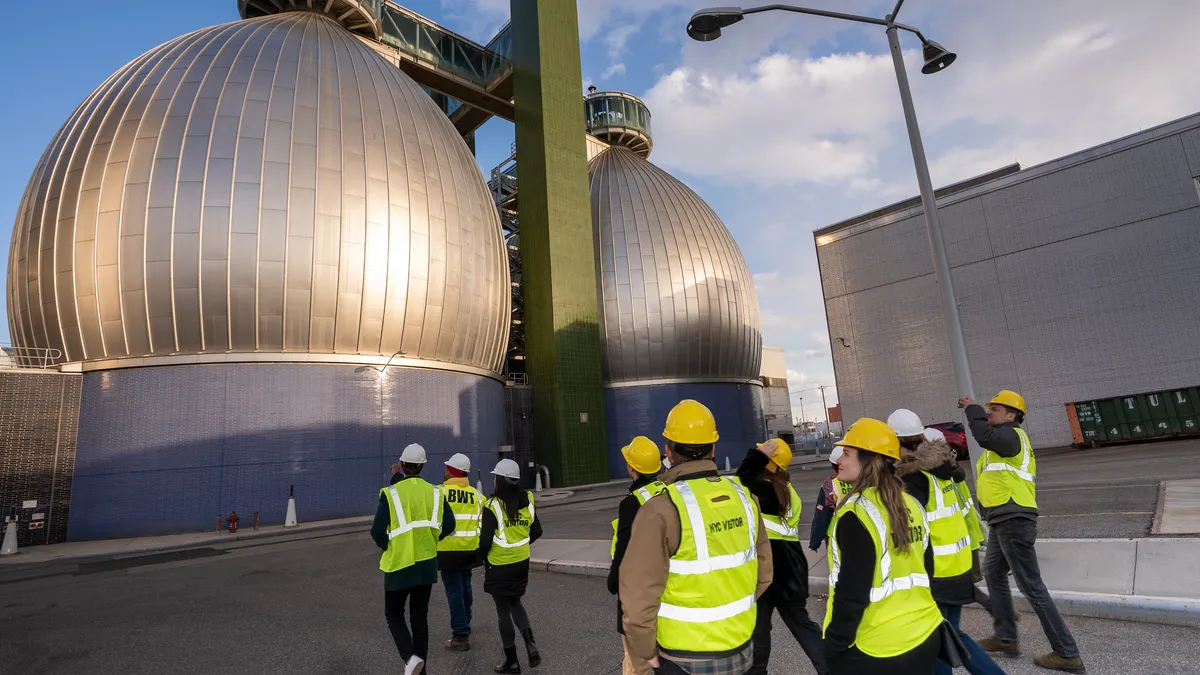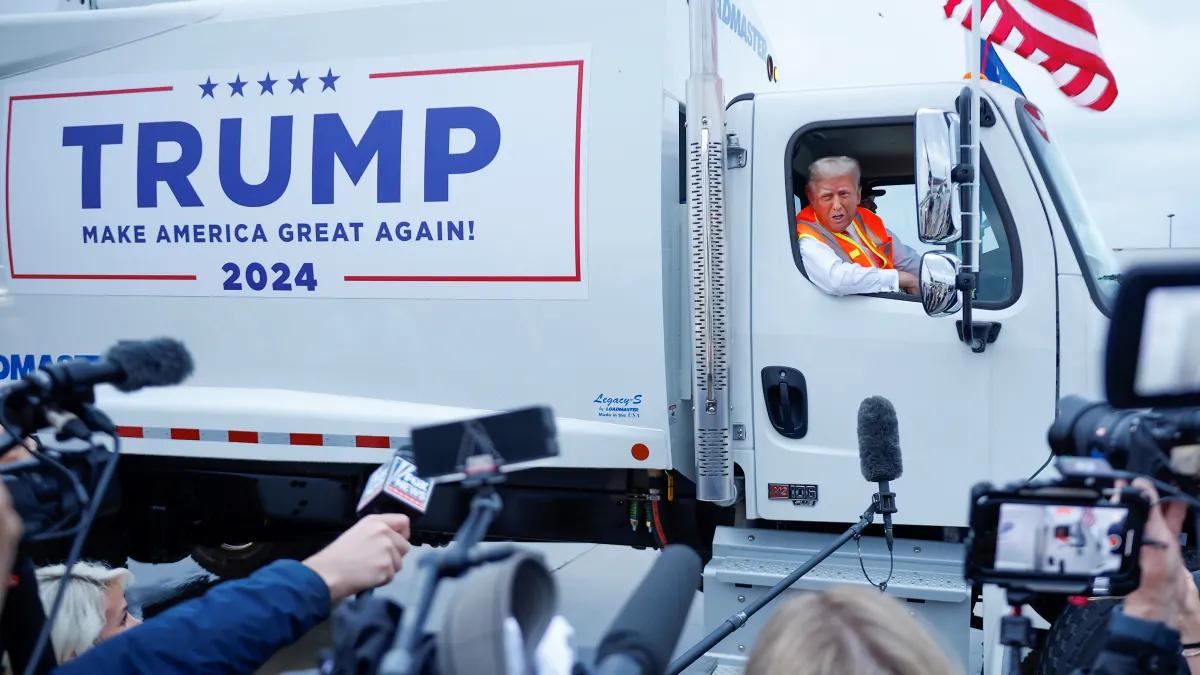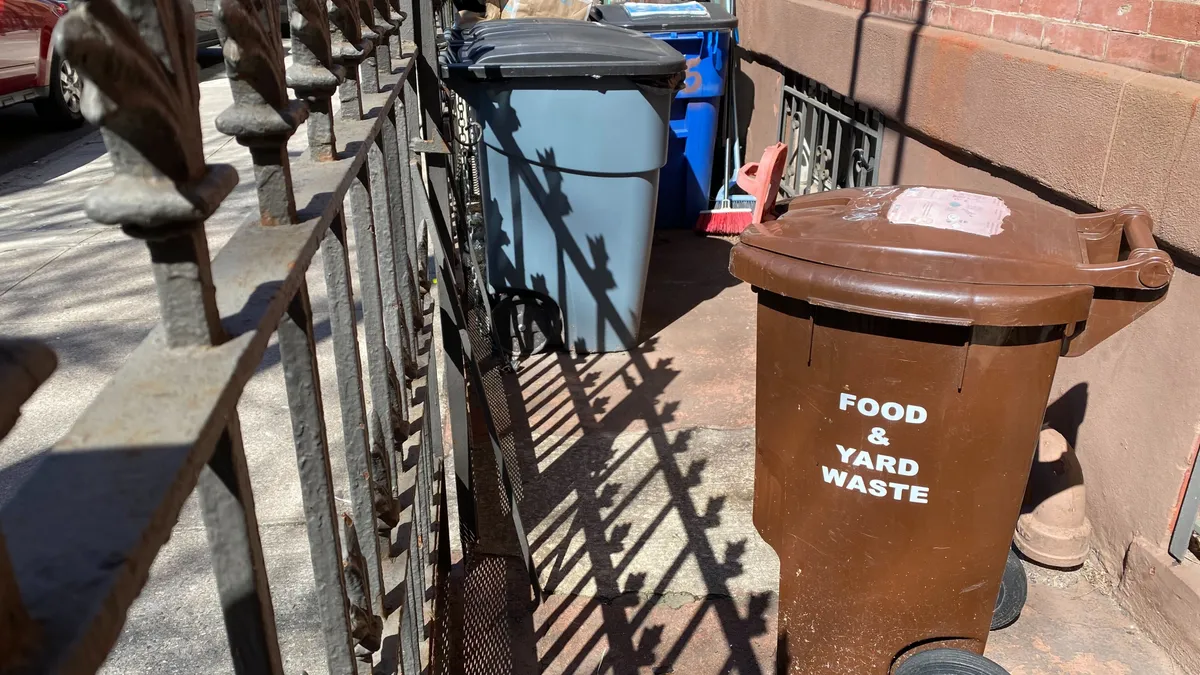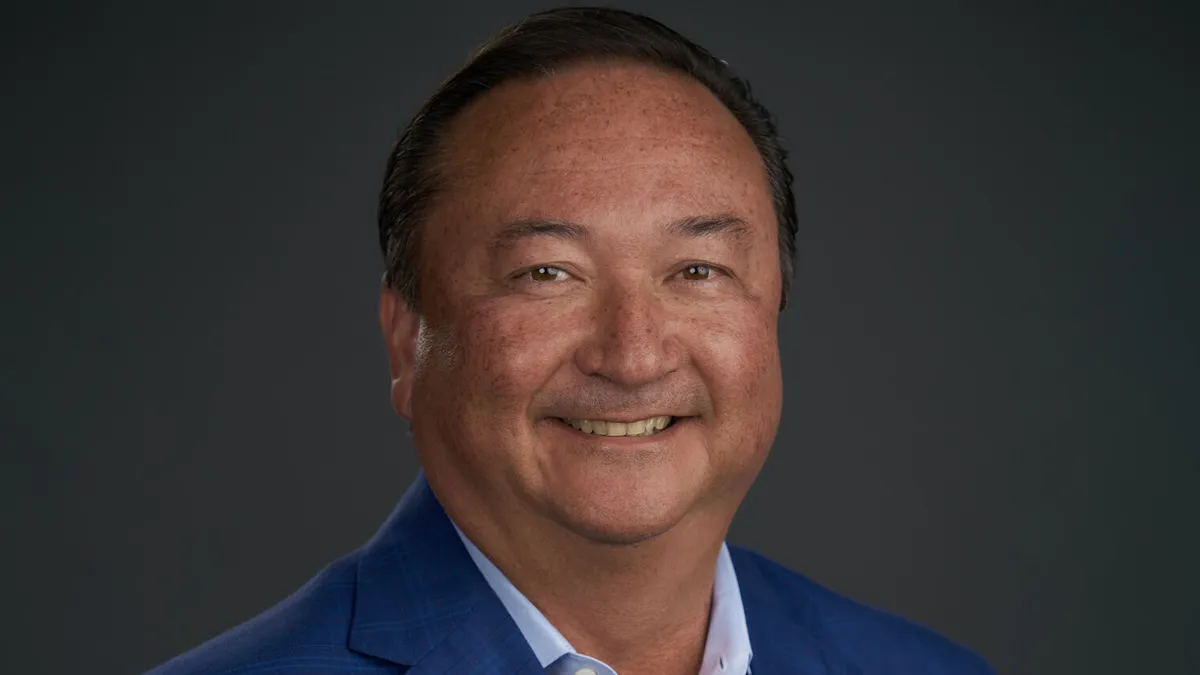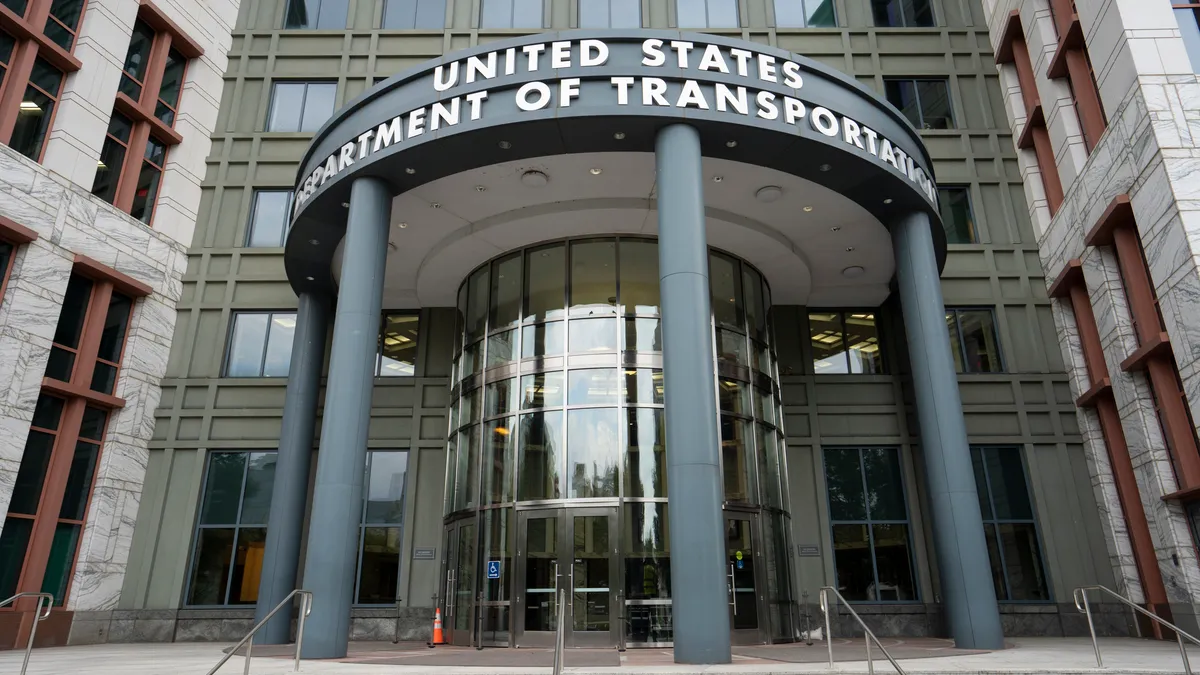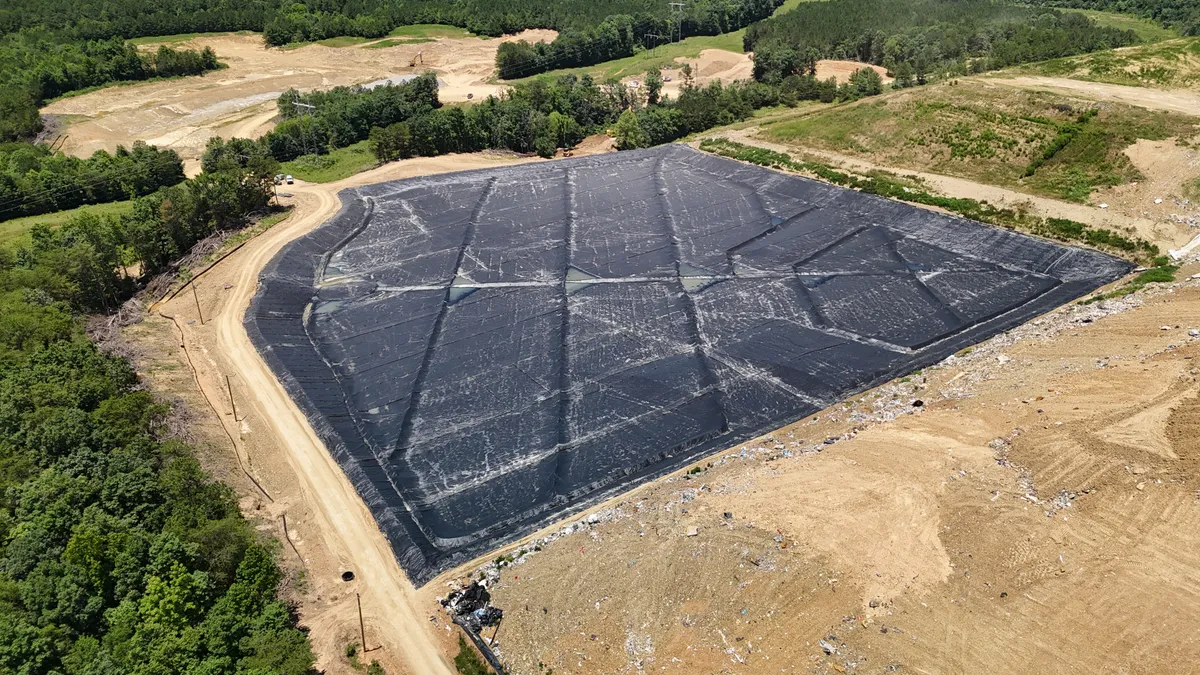City leaders are facing complex decisions about the fate of New York's organic waste following the city council's approval of a suite of bills making curbside organics separation and collection mandatory, among other measures. The bills passed by veto-proof margins but have not been signed by Mayor Eric Adams.
New York City composting experts advocated for the inclusion of their services in the city’s future organics regime in a Monday webinar hosted by four borough Solid Waste Advisory Boards.
The city has supported community composters through programs like the NYC Compost Project since 1993, but budgeting issues and a push for centralized composting and anaerobic digestion to handle the millions of tons of organic waste generated by residents and businesses may cut into their work, experts said.
“All forms of composting are beneficial, there's not one size that fits all,” Frank Franciosi, executive director of the U.S. Composting Council, said. “The combination of doing small scale, medium scale and large scale is going to be really important.”
Dior St. Hillaire, a sustainability and composting expert who chairs the Bronx Solid Waste Advisory Board, said Intro. 244-A, which codifies mandatory organics collection, is "really, really impactful" for ensuring a steady supply of organic waste. She also said Intro. 281-B, which ensures at least 30 compost drop-off sites would remain available throughout the city, was a "step in the right direction" but wanted to see further assurances that community-led composting organizations would continue to be a part of New York City's organic waste processing in the future.
"A lot of the composting efforts that have happened over the years, we don't want to fall to the wayside because we're trying to centralize or aggregate this feedstock in a large way," St. Hillaire said. "The question is, how much of it is actually being composted? How much of it is actually going into the anaerobic digester?"
Efforts to create a system for collecting organic waste in New York City have been ongoing for years. Most recently, the city began a pilot in Queens for universal food and yard waste collection last fall. Over a 12-week period, the pilot generated 13 million pounds of organic waste before pausing for the winter. That program resumed in March.
Mayor Adams also announced plans for voluntary citywide curbside composting during his State of the City address in January. In conjunction with the announcement, DSNY also installed about 200 new compost "Smart Bins" accessible via app across the city.
The implementation of mandatory curbside organics collection could potentially reduce funding for food scrap drop-off sites and community composters, Clare Miflin, executive director of the Center for Zero Waste Design, said on the webinar.
She said that DSNY presently collects about 1 million tons of organic waste each year, and private haulers also collect about 1 million tons of organic waste from commercial businesses. The vast majority of that waste, however, is collected through the refuse stream and is not getting diverted for recycling. The residential waste alone, if composted, could be enough to cover 25% of New York’s landscaped areas in one inch of compost annually, Miflin said.
Who gets first crack at the newly collected waste remains to be seen. All of the Smart Bin compost waste collected outside of Staten Island is processed at WM’s Varick transfer facility before it's transported to the city Department of Environmental Protection's Newtown Creek wastewater treatment plant, Curbed reported in April. There, about 75% of the engineered bioslurry WM produces from food waste is refined into renewable natural gas, and the remaining solids can be further refined and used as fertilizer or ground cover.
The facility earned praise this week from EPA officials and other local leaders at a formal launch for its National Grid connection, which ensures that essentially all biogas produced at the facility goes toward beneficial uses, according to a release Wednesday.
DEP Chief Decarbonization Officer Jane Gajwani, who spoke during the webinar, said her agency had the capacity to dramatically scale up the amount of organic waste it could process. The city has 75 anaerobic digesters at its wastewater resource recovery facilities, and Newtown Creek could codigest up to 500 tons per day. New digesters at Hunts Point in the Bronx would also add 250 tons per day of capacity in 2026, and the agency predicts it could reach 1,000 tons per day of capacity overall by 2031, according to a presentation shared by Gajwani.
"This is infrastructure that we already own and need," Gajwani said. "It's something that we can leverage to help the city manage large amounts of organic material."
Gajwani noted that “there’s a lot of material that is looking for land” as part of the organics collection process, and stressed that both the anaerobic digestion her agency provides and traditional composting are carbon negative solutions for the city’s waste.
“We don’t think that these need to be competing,” Gajwani said.
The cost of implementing organics collection would be roughly $23 million in the upcoming fiscal year and $24 million in the following fiscal year, Sandy Nurse, a city councilmember and founder of food waste hauler and composter BK Rot, said.
Franciosi, of the U.S. Composting Council, noted that the program could pay for itself thanks to reduced costs for hauling and disposing of the waste, some of which goes out of state.
”Think about the cost of what it's costing New York City to export trash. What's the heaviest portion? Food scrap. What generates methane? Food scrap,” Franciosi said. “There's a huge cost and there's a huge carbon footprint. These programs should pay for themselves.”
The collection service is set to roll out citywide by the end of next year under Mayor Adams’ plans for the voluntary program. If the mandatory separation law goes into effect, the city would also institute penalties that are the same as existing penalties for violating New York recycling laws beginning on April 1, 2025. Those fines range from $25 to $100 per violation for owners of buildings with less than nine dwelling units and $100 to $400 per violation for owners of larger buildings.
Editor’s note: This article has been updated to clarify statistics about volumes of organic waste collected in New York and to further specify the rate of biogas conversion from food waste.



